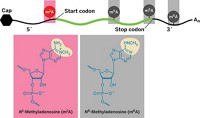Advertisement
Grab your lab coat. Let's get started
Welcome!
Welcome!
Create an account below to get 6 C&EN articles per month, receive newsletters and more - all free.
It seems this is your first time logging in online. Please enter the following information to continue.
As an ACS member you automatically get access to this site. All we need is few more details to create your reading experience.
Not you? Sign in with a different account.
Not you? Sign in with a different account.
ERROR 1
ERROR 1
ERROR 2
ERROR 2
ERROR 2
ERROR 2
ERROR 2
Password and Confirm password must match.
If you have an ACS member number, please enter it here so we can link this account to your membership. (optional)
ERROR 2
ACS values your privacy. By submitting your information, you are gaining access to C&EN and subscribing to our weekly newsletter. We use the information you provide to make your reading experience better, and we will never sell your data to third party members.
Biological Chemistry
Cubelike DNA Visualized In Cells
Drug Discovery: Elusive drug targets called G-quadruplexes confirmed in human DNA
by Stu Borman
January 21, 2013
| A version of this story appeared in
Volume 91, Issue 3

More than a decade of research has been carried out on the cubelike DNA structures called G-quadruplexes, and scientists have been testing drugs designed to interact with them. But conclusive proof that the structures actually exist in human cell genomes has been lacking.
A new study provides that proof, confirming that G-quadruplexes are legitimate targets for drug discovery. One putative G-quadruplex-targeted compound was a cancer drug candidate. The new findings suggest it interacts with G-quadruplexes in cells—there had been some skepticism—and was therefore designed in the proper way.
Evidence that G-quadruplexes might exist in cells emerged from earlier studies of small molecules that bind the folded DNA structures. But because the selectivity of small molecules for specific targets is limited, those studies fell short of definitively proving the existence of G-quadruplexes.
In the new study, chemist Shankar Balasubramanian, grad student Giulia Biffi, and coworkers at Cambridge University developed antibodies that are highly specific for G-quadruplex binding. They don’t recognize unfolded sections of a DNA double helix, for instance.
By tagging the G-quadruplex-bound antibodies with fluorescent groups and analyzing the resulting fluorescence microscopically—a technique called immunofluorescence—the researchers were able to visualize G-quadruplexes at localized sites in human chromatin (Nat. Chem., DOI: 10.1038/nchem.1548). The study also found that the density of G-quadruplexes changes during different parts of the cell cycle.

The study “provides firm evidence that G-quadruplex structures are real therapeutic targets,” says G-quadruplex expert Stephen Neidle of University College London School of Pharmacy.
This is the first conclusive demonstration that G-quadruplexes occur in vivo at defined sites in human chromosomes, comments Hans-Joachim Lipps of the University of Witten-Herdecke, in Germany, coauthor of a previous study that used antibodies to visualize the structures in ciliates, cilia-bearing unicellular eukaryotes (Proc. Natl. Acad. Sci. USA, DOI: 10.1073/pnas.141229498). G-quadruplex-stabilizing ligands were being developed as possible cancer therapeutics without in vivo evidence showing that G-quadruplexes exist in the human genome, he says, and the study “now gives a rationale for use of such ligands.”
“I wish I had done the work,” says Daniela Rhodes of the MRC Laboratory of Molecular Biology in Cambridge, England, who studies the protective caps known as telomeres found on the ends of chromosomes. She says some researchers in her field have been reluctant to accept that G-quadruplex DNA structures would form in telomeres. “I hope this paper will wake them up,” she says. The findings “provide new understanding of telomere capping and form the basis for new experiments.”




Join the conversation
Contact the reporter
Submit a Letter to the Editor for publication
Engage with us on Twitter